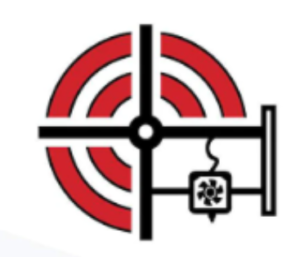Nikon SLM Solutions has signed a Memorandum of Understanding (MoU) with Rocket Lab. The aerospace manufacturing firm wishes to reserve two new “ultra-large format metal additive manufacturing platforms.” This is great news for Nikon as it underscores the company’s commitment to innovating and raising the stakes. Many people were skeptical of the NXG system and its 12 lasers, only for Nikon to release an even larger system with an extended build volume. In 2022, SLM already sold two NXGs to a “California-based rocket company.” Rocket Lab is based in Long Beach (as are a bunch of other rocket firms), so this very well could be the basis for this new purchase. Nikon has already sold NXGs to GKN, Bosch, ATI, CTC, Veeco, Collins, Sintavia, Divergent and many unnamed others.
Nikon SLM Solutions CEO Sam O’Leary said,
“We are proud to deepen our collaboration with Rocket Lab as they continue to pioneer scalable, high-performance AM for space. Their decision to reserve our forthcoming ultra-large platform underscores a shared belief in pushing the limits of innovation—and doing so with confidence at scale.”
The company also says that,
“Nikon SLM Solutions’ next-generation system will be capable of producing significantly larger parts at unmatched productivity, helping manufacturers like Rocket Lab reduce part counts, optimize designs, and accelerate time to launch.”
The NXG has let Nikon lead in large-scale aerospace applications, an area that previously had a lot of Additive Industries machines, despite competition from Velo and EOS’s AMCM unit. The company’s decision to make the NXG in the US is, now retrospectively, an utterly brilliant one. And so far, the Nikon-SLM marriage looks like it is a happy one. SLM is contributing to Nikon’s future and receiving just the right amount of freedom, help, and attention to prosper. There are a lot of large Chinese printers, but there is little in the way of competition from non-Chinese firms. Velo3D, Renishaw, and Additive Industries are much reduced in inertia. EOS seems content to putter along with AMCM systems meeting some people’s needs, while not challenging SLM for the largest systems, and AddUp is focused on smaller industrial units. Perhaps DMG Mori could work its way towards Nikon’s largest systems, but this will take years. Sodick and Prima Additive could also provide a challenge going forward. Generally however, everyone is focusing on the 400 x 400 x 400 mm space and leaning more towards the quad-laser than the 12. New alloys and nLight are sure to soak up their attention. It’s essentially now as if everyone is leaving the large-scale market in the US to Nikon SLM.

Rocket Lab’s Electron launch system with 3D printed Rutherford engines takes off. Image courtesy of Rocket Lab.
This may be an expensive mistake. We know that New Space has been driving large LPBF adoption. Weight, part count, and optimized geometry concerns have led to propulsion units and pressure tanks being made in ever-larger build volumes. Copper and other materials have helped these space companies grow, and indeed, rocket engines are now primarily made with 3D printing. Niobium, CuNi, tungsten, and other exotic materials have also led to increased usage in large systems for submarine propulsion, missiles, radar, hypersonics, turbomachinery, and more. It is clear that a lot of players effectively ceded this market to SLM, but now we are seeing broader adoption by industrial groups. For big parts, the large-format printers totally make sense. Now, however, conventional wisdom would have it that if you need a lot of smaller parts, they are riskier, while not providing much in the way of advantages. Sold at a premium, a fleet of smaller, more flexible systems is still typically cheaper and more flexible. Nikon SLM maintains that better economics can follow from these large units; however, this could see their adoption beyond just military and New Space.
So, what is after the Next Generation and Deep Space Nine? If Nikon SLM’s current NXG 600E system has 12 1,000 w lasers and a 600 x 600 x 1500 mm build volume, what can we speculate about a much larger system? SpaceX Raptor engines are 3.1 meters x 130 cm, and Rocket Lab’s Rutherfords are smaller (60 x 138 cm), while most hypersonic vehicles are less than a meter in diameter, with some around 90 cm. The nose cones of hypersonic vehicles could be up to one meter long with a one meter diameter, and it would be super cool to make that out of tungsten. Also, ICBM warheads can be around 150 x 46 cm. So one option is for Nikon SLM to try and extend the current architecture to four meters to enable it to build more propulsion units in one go vertically, one per machine. That could very well be possible. It would be hard, but would give advantages in design freedom and production to existing clients. It would cement the company’s lead in engines and hypersonics, which would be a plum segment to own in the coming years.
But, there is a so-so much more compelling alternative. Remember Adira’s Tiled Laser Melting? Yeah, I almost forgot the Portuguese technology developed by Fraunhofer that Nikon bought in 2023, too. That company has a system that moves the process chamber over areas called tiles, processing them in turn. The Adira Addcreator system was capable of making 1 meter diameter objects. More importantly, as you scale a regular additive system, you’re going to have (at least) three problems: increasing the number of lasers will make sense until it doesn’t, and then the math problem of how they affect each other; the build and smoke will be impossible to solve; lots of lasers and large build volumes will eat into the machine cost and make it super expensive. With the Tiled technology, you could move multiple process chambers (with Z) over a prospectively huge (and cheap) build volume with lots of X and Y. I love this approach and secretly hope that this is what Rocket Lab bought into. That would, if successful, really change the economics of making additive parts. You wouldn´t need to spend it all on build chamber and lasers, but could make much larger things much more quickly. I for one can’t wait to learn more about what Nikon SLM is up to and where they will go next, but I hope it’s to Portugal.
Subscribe to Our Email Newsletter
Stay up-to-date on all the latest news from the 3D printing industry and receive information and offers from third party vendors.



